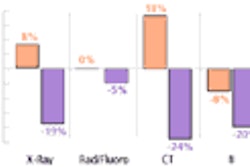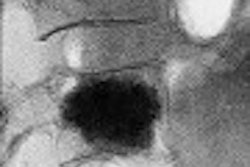Radiology departments may soon find needle safety rising higher on their list of concerns, thanks to a campaign by medical students and residents to highlight the issue by filing complaints against hospitals for alleged violations of U.S. law.
In September, Montefiore Medical Center in New York City became the first facility cited by the U.S. Occupational Safety and Health Administration (OSHA) for violations of the 2001 Needlestick Safety and Prevention Act.
The OSHA regulation, codified as 29 CFR 1910.1030(d)(2), requires facilities to use engineering and work-practice controls to "eliminate or minimize employees’ exposure to bloodborne pathogens."
Among the complaints filed with OSHA by a mostly anonymous group of Montefiore residents: that the medical center allowed the use of suture needles to secure peripherally inserted central catheter (PICC) lines, a common procedure in interventional radiology.
Although OSHA proposed only a $9,000 fine against Montefiore for 46 alleged violations, the hospital has contested the notification through an informal hearing process. "We believe that this interaction will significantly alter any reported preliminary findings," said Steven Osborne, a Montefiore spokesperson.
Nonetheless, interested parties, including the American Medical Students Association, have asked the American Hospital Association to alert its members about OSHA’s citation of Montefiore -- or else.
"We ask you to facilitate the compliance of your member institutions with current OSHA standards by writing to each of them informing them of this landmark OSHA ruling," wrote AMSA president Dr. Lauren Oshman, along with two Montefiore residents and representatives of the advocacy group Public Citizen.
"In the alternative, medical students and residents stand ready to file institution-by-institution complaints against violating hospitals," stated the October 28 letter, which also summarized OSHA’s findings at Montefiore.
According to co-author Dr. Steve Cha, Montefiore’s chief resident in internal medicine, the AHA’s response to the letter was less than what was sought. So now the group is spearheading a survey of practices at other facilities.
"There are unsafe needles being used across the country," Cha said in an interview with AuntMinnie.com. "The reason we filed the complaint was not so much that Montefiore was particularly unusual in its needle practices, but rather that Montefiore is fairly typical."
Among those applauding the OSHA complaints is Dr. Steve Bierman, president of the National Alliance for the Primary Prevention of Sharps Injuries (NAPPSI) and CEO of Venetec International, a San Diego-based manufacturer of sutureless catheter placement devices.
"I think the interns and residents are well within their rights to take that action," said Bierman, a former emergency physician who contracted hepatitis B from a needlestick while practicing at Scripps Hospital in Encinitas, CA. "This is a life-threatening risk, and at the very least the AHA should comply with their request."
But it may require OSHA action to really motivate hospitals, Bierman added. "The fact that they’ve recently issued this Montefiore citation -- we as a company have already felt the increase in demand for sutureless products."
Further OSHA citations would certainly draw more attention to sharps safety at hospitals, agreed Dr. Victoria Marx, a professor of interventional radiology at the Keck School of Medicine, University of Southern California in Los Angeles.
But interventionalists in particular will still face risks from large-bore hollow needles and other implements used for percutaneous access, noted Marx, who recently wrote about such concerns in the Journal of Vascular and Interventional Radiology (August 2003, Vol.14:8 pp. 947-951).
"The problem we have is there are instruments we use for which no safer technology has yet been developed," Marx said. "It’s not a broad enough market for there to be much financial incentive for a company to do that."
By Tracie L. ThompsonAuntMinnie.com staff writer
February 3, 2004
Related Reading
U.S. health workers seek better SARS protection, April 17, 2003
British junior doctors stand up to bullying, April 16, 2003
PICCing sides: Interventional radiologists weigh IV access lines, February 24, 2003
Consumer group says mandatory limits on residents' shifts are needed, October 14, 2002
Needlestick injuries: A "silent epidemic" in radiology, April 19, 2002
Education and awareness can prevent radiology workplace injuries, May 28, 2001
Copyright © 2004 AuntMinnie.com


















